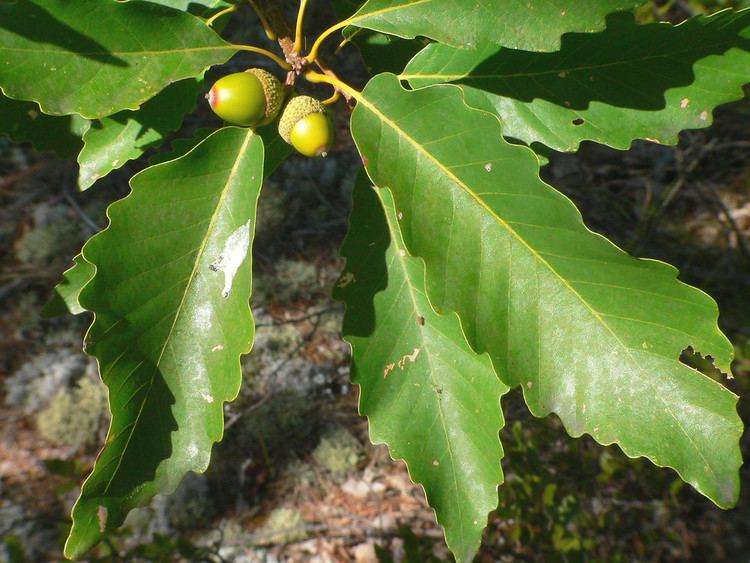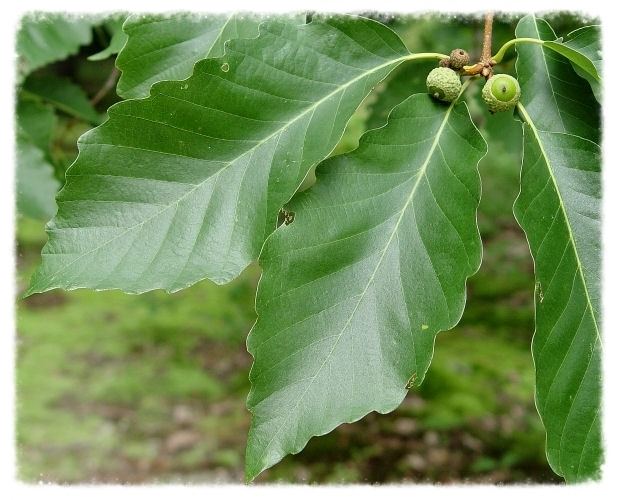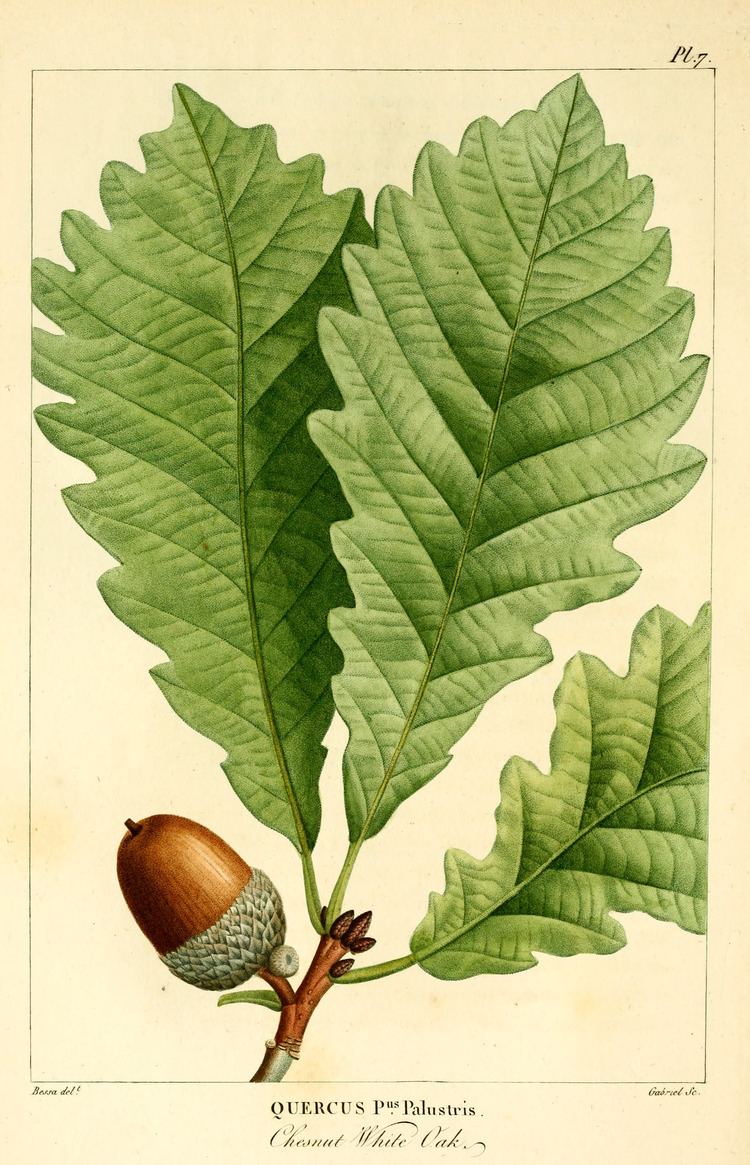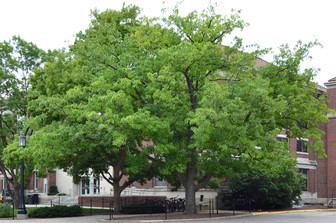Section Quercus Higher classification Oak | Genus Quercus Scientific name Quercus prinus Rank Species | |
 | ||
Similar Oak, Quercus velutina, Quercus michauxii, Quercus coccinea, Quercus muehlenbergii | ||
Quercus montana, the chestnut oak, is a species of oak in the white oak group, Quercus sect. Quercus. It is native to the eastern United States, where it is one of the most important ridgetop trees from southern Maine southwest to central Mississippi, with an outlying northwestern population in southern Michigan. It is also sometimes called "rock oak" because of its presence in montane and other rocky habitats. As a consequence of its dry habitat and ridgetop exposure, it is not usually a large tree, typically 18–22 m (59–72 ft) tall; occasional specimens growing in better conditions can however become large, with trees up to 40–43 m (131–141 ft) tall known. They tend to have a similar spread of 18–22 m (59–72 ft). A 10-year-old sapling grown in full sun will stand about 5 m (16 ft) tall. This species is often an important canopy species in an oak-heath forest.
Contents

Taxonomy and nomenclature

Extensive confusion between the chestnut oak (Quercus montana) and the swamp chestnut oak (Quercus michauxii) has occurred, and some botanists have considered them to be the same species in the past.

The name Quercus prinus was long used by many botanists and foresters for either the chestnut oak or the swamp chestnut oak, with the former otherwise called Q. montana or the latter otherwise called Q. michauxii. The application of the name Q. montana to the chestnut oak is now accepted, since Q. prinus is of uncertain position, unassignable to either species.
Description

The chestnut oak is readily identified by its massively-ridged dark gray-brown bark, the thickest of any eastern North American oak. The leaves are 12–20 cm (4 3⁄4–7 3⁄4 in) long and 6–10 cm (2 1⁄4–4 in) broad, shallowly lobed with 10–15 rounded lobes on each margin; they are virtually identical to the leaves of swamp chestnut oak and chinkapin oak, but the trees can readily be distinguished by the bark, that of the chinkapin oak being a light ash-gray and somewhat peeling like that of the white oak and that of swamp chestnut oak being paler ash-gray and scaly. The chinkapin oak also has much smaller acorns than the chestnut oak. The chestnut oak is easily distinguished from the swamp white oak because that tree has whitened undersides on the leaves. Another important distinction between the chestnut oak and the swamp chestnut oak is by the habitat; if it grows on a ridge, it is chestnut oak, and if it grows in wet bottomlands, it is probably the more massive swamp chestnut oak; however, this is not fully reliable.
Characteristics of the chestnut oak include:


The acorns of the chestnut oak are 1.5–3 cm (1⁄2–1 1⁄4 in) long and 1–2 cm (3⁄8–3⁄4 in) broad, among the largest of native American oaks, surpassed in size only by the bur oak and possibly swamp chestnut oak.
Ecology
This species is a predominant ridge-top tree in eastern North American hardwood forests. It often grows with multiple trunks, often as a result of logging or prior injury to the main stem. It is a long-lived tree, with high-quality timber when well-formed. The acorns of the chestnut oak are a valuable wildlife food.
Uses
Chestnut oak trees are generally not the best timber trees because they are usually branched low and not very straight, but when they grow in better conditions, they are valuable for timber, which is marketed as 'mixed white oak'.
